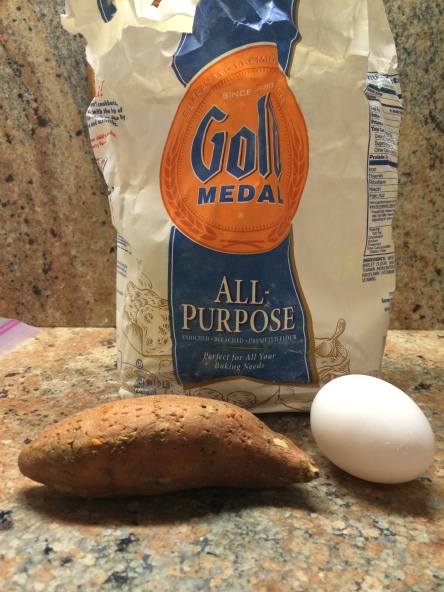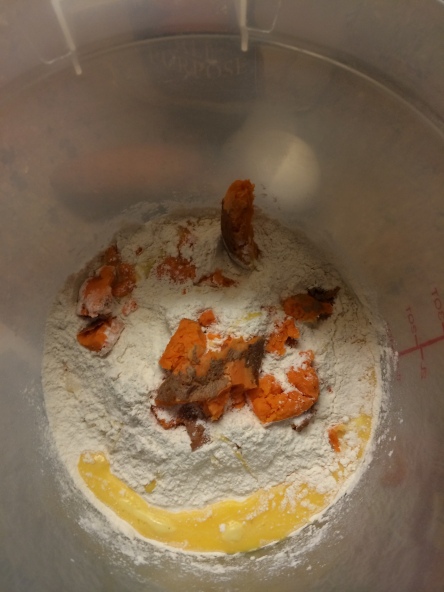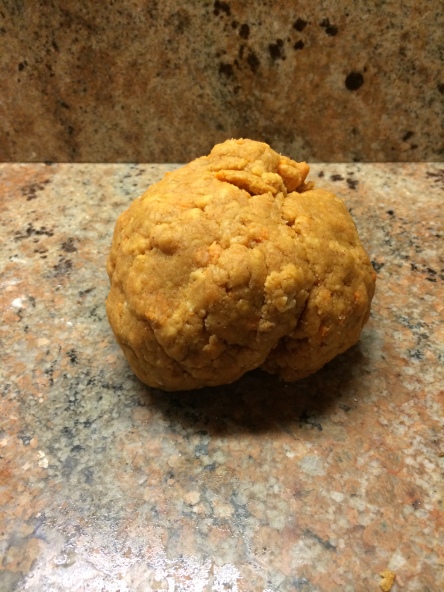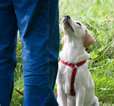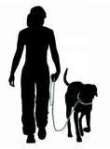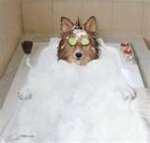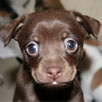Are you conte mplating adding a 2nd, 3rd, or 4th furry addition to your family? In order to make the transition smoother for the new dog, the existing dogs, and you, following are some guidelines for not only choosing which dog to bring into your family, but how to introduce them to your existing “pack”.
mplating adding a 2nd, 3rd, or 4th furry addition to your family? In order to make the transition smoother for the new dog, the existing dogs, and you, following are some guidelines for not only choosing which dog to bring into your family, but how to introduce them to your existing “pack”.
Choosing Your New Dog
When choosing which new dog to bring into your family, there are some basic ground rules to follow to help ensure that the new dog will get along with your resident dog(s).
- Does your current dog have any doggie friends? If your resident dog is selective with their friends or generally tends to not get along with other dogs, then adding a new addition may not be the best idea.
- Do your best to select a dog that has the opposite personality of your current dog. If your current dog is more dominant, choose a dog that is more submissive.
- In general, it would also be a good idea to choose a dog of the opposite sex, or if your current dog is male get another male. Sometimes females have more troubles with same-sex dogs.
Guidelines for Your Resident Dog(s)
 Make sure that the structure and leadership in your household is well established and that your current dog(s) is under good voice control and knows their basic obedience commands. If your resident dog has trouble following basic rules and commands, it will be difficult for them to listen to you if a problem arises between the two dogs. Set up your home beforehand and ensure that you have enough resources for both dogs (bowls, beds, crates, toys) so that neither dog will feel the need to have to guard these things from the other.
Make sure that the structure and leadership in your household is well established and that your current dog(s) is under good voice control and knows their basic obedience commands. If your resident dog has trouble following basic rules and commands, it will be difficult for them to listen to you if a problem arises between the two dogs. Set up your home beforehand and ensure that you have enough resources for both dogs (bowls, beds, crates, toys) so that neither dog will feel the need to have to guard these things from the other.
The Meeting
Exercise b oth dogs separately before the meeting, but do not exhaust them! Tired dogs, like children, can become grumpy. Do NOT introduce the dogs in or around your home; dogs tend to be territorial, so take them to a neutral place so that your current dog does not feel that he has to protect their home from an intruder. Choose a fenced area that is relatively free from distractions and other dogs, like an empty school yard, but not a dog park.
oth dogs separately before the meeting, but do not exhaust them! Tired dogs, like children, can become grumpy. Do NOT introduce the dogs in or around your home; dogs tend to be territorial, so take them to a neutral place so that your current dog does not feel that he has to protect their home from an intruder. Choose a fenced area that is relatively free from distractions and other dogs, like an empty school yard, but not a dog park.
With both dogs on leash, have one person to handle each and casually walk them past each other a few times. When you feel comfortable, drop the leashes (but keep them attached!) and let the dogs greet each other. If you witness signs of stress or aggression (i.e., baring teeth, growling, freezing, etc.), pick up the leashes and do a few more walk-bys and try again. This procedure may take a few attempts before the dogs are comfortable with each other.
At the Home Front
Once your new dog has been properly introduced to your resident dog(s), it is time to bring them home. We would suggest restricting the dogs’ area of free roaming by utilizing baby gates and closing all doors to bedrooms and bathrooms so that you can keep an eye on them at all times. If you use crates, be sure to have one for each dog in the event that they need to be separated or one or both need a break to recharge.
Take the d ogs on a walk together before entering the home. Walking together is a great way for dogs to get accustomed to each other in a neutral and fun way. During meal times, feed the dogs from separate bowls. If either dog is known to be food possessive, feed them in separate rooms as well. If you are unsure whether the dogs will guard their food from the other, feed them on opposite sides of the room while you supervise. Immediately move one dog to another room if you see any signs of possessiveness.
ogs on a walk together before entering the home. Walking together is a great way for dogs to get accustomed to each other in a neutral and fun way. During meal times, feed the dogs from separate bowls. If either dog is known to be food possessive, feed them in separate rooms as well. If you are unsure whether the dogs will guard their food from the other, feed them on opposite sides of the room while you supervise. Immediately move one dog to another room if you see any signs of possessiveness.
Do your best to avoid preferential treatment; if you give one dog a treat, give the other(s) a treat from the other hand. Give each dog equal amounts of affection. In the event that the dogs get into a tussle, act like both dogs are at fault – do not correct one and not the other – expect good behavior from both. Give each dog individual training sessions and walks.
Proper introductions and a structured household with defined leadership roles will lessen the likelihood of complications now and in the future.
0.000000
0.000000
 a bunch by introducing pet dye. Personally I love that there is an option to spice up my dogs coat. But there are some pro and cons with dyeing your pet, you first must make sure that it is pet safe dye that you are using. Some people think that dying your pet is awesome and some people think its cruel, the most important thing to remember is the safety of your pet if you decide to add some color.
a bunch by introducing pet dye. Personally I love that there is an option to spice up my dogs coat. But there are some pro and cons with dyeing your pet, you first must make sure that it is pet safe dye that you are using. Some people think that dying your pet is awesome and some people think its cruel, the most important thing to remember is the safety of your pet if you decide to add some color.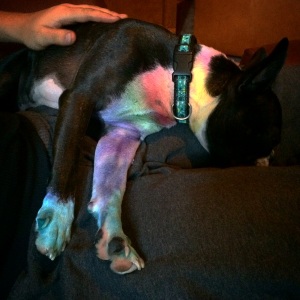 way is to use Manic Panic or Kool- Aid, I’ve used dog friendly blow pens, chalk, Manic Panic, and gel. While personally I prefer the blow pens since they only last about a week or so, Manic Panic is more permanent choice which usually lasts about 2 weeks. My boys are used for events for my work all the time, Dipper my Boston Terrier loves being dyed and will strut his stuff for anyone watching as long as he has a little more color in his coat.
way is to use Manic Panic or Kool- Aid, I’ve used dog friendly blow pens, chalk, Manic Panic, and gel. While personally I prefer the blow pens since they only last about a week or so, Manic Panic is more permanent choice which usually lasts about 2 weeks. My boys are used for events for my work all the time, Dipper my Boston Terrier loves being dyed and will strut his stuff for anyone watching as long as he has a little more color in his coat.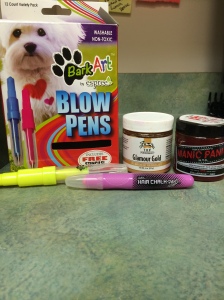
 Nowadays you’ll see dogs looking like tigers, pandas, people chose certain themes just like we put a bunch of hearts on my co-workers dog.
Nowadays you’ll see dogs looking like tigers, pandas, people chose certain themes just like we put a bunch of hearts on my co-workers dog.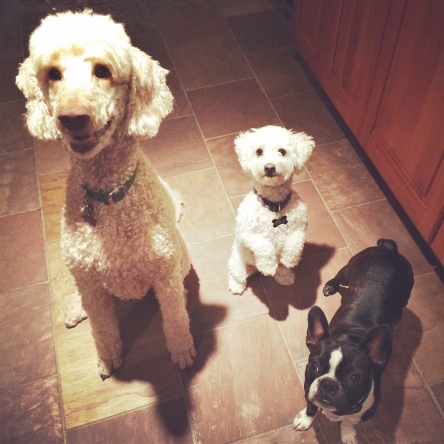 I like to think that I’m a pretty experienced baker but have never tried making treats for my dogs. I found a couple of good, healthy, and potentially grain free recipes to try out. So for this trial round I’m going to try a peanut butter sweet potato treat that makes roughly 2 dozen cookies.
I like to think that I’m a pretty experienced baker but have never tried making treats for my dogs. I found a couple of good, healthy, and potentially grain free recipes to try out. So for this trial round I’m going to try a peanut butter sweet potato treat that makes roughly 2 dozen cookies.